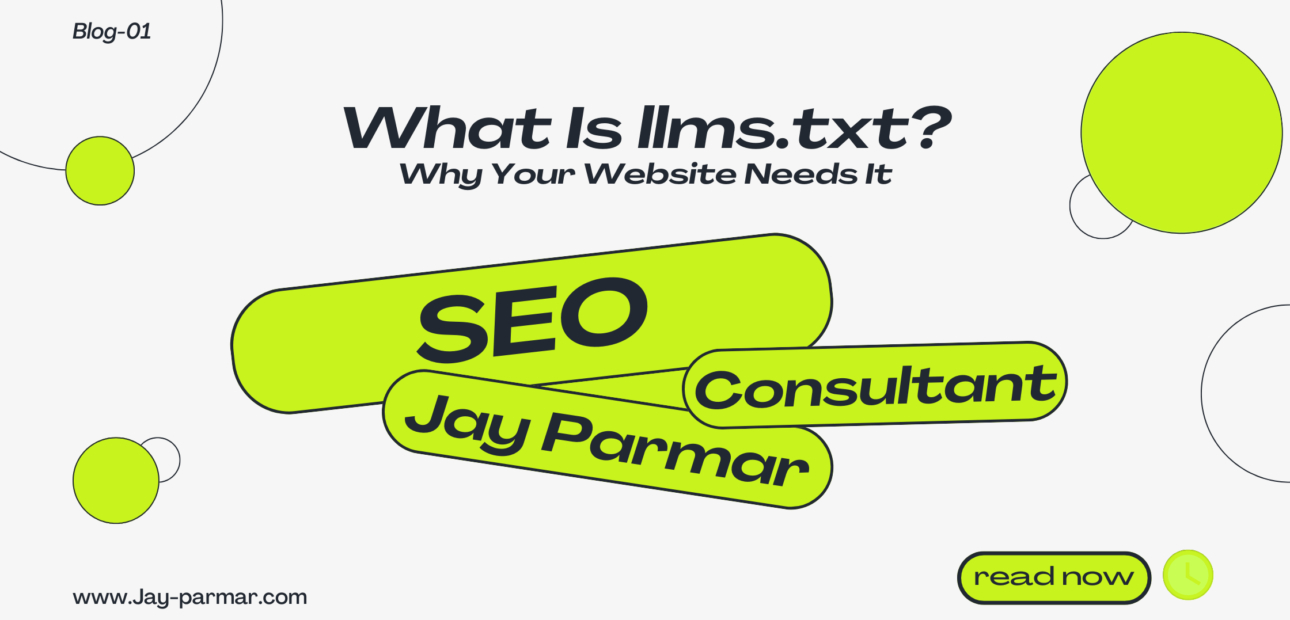
What Is llms.txt and Why Your Website Needs It
As generative AI tools like ChatGPT, Claude, and Google’s Gemini continue to grow in popularity, there’s an increasing need for websites to communicate with these Large Language Models (LLMs) effectively. Enter: llms.txt. A newly proposed standard, this simple text file could revolutionize how AI tools interact with your website.
In this blog post, we’ll cover:
- What is
llms.txt? - How it works
- Why it matters
- Key differences between
robots.txt,sitemap.xml, andllms.txt - How to implement it
- And why now is the right time to prepare your site
💡 What Is llms.txt?
llms.txt is a proposed new standard similar to robots.txt, but designed specifically for large language models. While robots.txt controls which parts of a website search engines can crawl, llms.txt helps AI tools understand and navigate the site better.
It acts as a bridge between your website and AI systems, ensuring they:
- Understand your site’s structure
- Access content appropriately
- Credit original sources
- Stay within content boundaries set by you
The goal is to give site owners more control over how AI tools learn from their content.
🔄 How llms.txt Works
Much like robots.txt, the llms.txt file sits at the root of your website (i.e., https://yourdomain.com/llms.txt). It outlines content structure, preferred links, and even metadata about how LLMs should interpret different parts of your site.
Here’s an example structure:
# llms.txt for mysite.com
site: https://mysite.com
llms:
- name: ChatGPT
usage_policy: https://mysite.com/ai-policy
contact: mailto:contact@mysite.com
sections:
- name: Blog
url: https://mysite.com/blog
description: Articles on SEO, marketing, and analytics
- name: About
url: https://mysite.com/about
description: Company background and mission
This file gives LLMs:
- A clear idea of your site layout
- Guidelines for content use
- Pathways to learn and cite content more accurately
✅ Benefits of Using llms.txt
- 🔍 Improved AI Discoverability: Make it easier for AI tools to find and understand your key content.
- 📊 Accurate Representation: Ensure LLMs summarize or represent your brand accurately.
- ✉️ Content Usage Guidelines: Set expectations for how your content should (or shouldn’t) be used.
- 📄 Attribution Control: Ensure your site is credited as a source when mentioned in AI-generated content.
🤖 Robots.txt vs Sitemap.xml vs Llms.txt
Here’s a point-by-point comparison:
| Feature / File | robots.txt | sitemap.xml | llms.txt |
|---|---|---|---|
| Primary Purpose | Controls which pages bots can access | Lists all indexable pages for search engines | Helps LLMs understand and navigate website content |
| Target Audience | Search engine crawlers | Search engine crawlers | Large language models (LLMs) and AI tools |
| Content Structure | Simple rules for allow/disallow | XML-based list of URLs | Markdown-style overview of site structure and content |
| Helps with Indexing? | Yes, indirectly by allowing/disallowing | Yes, directly by listing all pages | Not for indexing, but improves AI understanding |
| Context Awareness | No | No | Yes – provides semantic relationships between content |
| AI Optimization | No | No | Yes – built specifically for AI tools and LLMs |
| Format | Plain text with directives | XML format | Markdown-style plain text |
| Discoverability | Placed in root as /robots.txt | Linked in robots.txt or submitted to search engines | Placed in root as /llms.txt with optional HTTP header |
| User Experience Impact | Indirect, affects what gets indexed | Indirect, helps search engines find pages | Direct – improves AI-generated responses about your site |
🛠️ How to Implement llms.txt
- Create the File: Use a plain text editor or a static site generator to create your
llms.txtfile. - Add Your Site Info: Include your domain, content sections, descriptions, and policies.
- Host at Root: Upload the file to the root directory of your website.
- Optional: Add a
Link:HTTP header to advertise it.
Example:
Link: <https://yoursite.com/llms.txt>; rel="llms"
🌍 The Future of Website-AI Interaction
As AI tools become more integrated with how users interact with the internet, having a clear llms.txt file may become standard practice—just like robots.txt is today.
It not only makes your site AI-friendly but also positions you as a forward-thinking brand ready for the future of digital.
💼 Need Help Implementing llms.txt or Optimizing Your Site for AI?
If you’re looking to improve how your site appears in AI tools or want to stay ahead of upcoming SEO and AI trends, I can help.
As an experienced SEO consultant, I specialize in helping businesses:
- Structure their websites for discoverability
- Implement new technologies like
llms.txt - Optimize content for search engines and AI tools
Reach out today for a free consultation and let’s get your website AI-ready!

